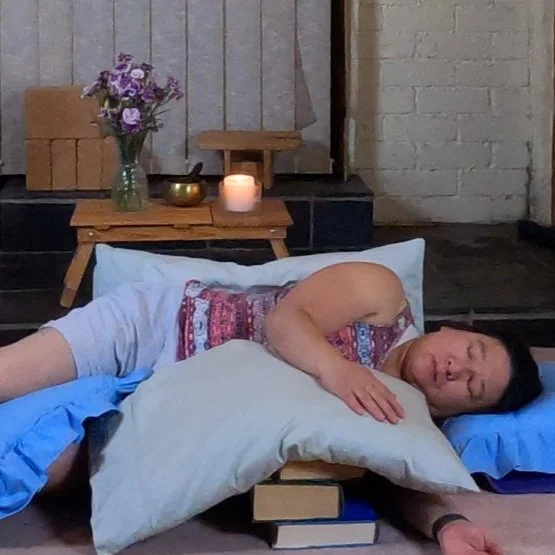How to Do Nothing
A couple of years ago, I read this article, There are benefits to doing absolutely nothing, and it piqued my interest. For a couple of weeks, I tried to do absolutely nothing, just lounging on the couch with only my thoughts, but I’d always fall asleep. Not a good idea when I had other things to do.
So when the Do Nothing Challenge appeared in my social media feed, it provided me with the impetus to try doing nothing again. For the challenge, doing nothing was defined as “anything that allows the mind to slow down and relax away from the pressures of everyday life”. This definition is open to interpretation: one person on social media asked whether reading was doing nothing and I wondered about journalling.
However, after perusing the suggestions on the challenge website and watching some videos posted by Danielle (from Radiant Sol Yoga), I decided to find activities that minimised sensory stimuli and, what I would call, structured thinking such as to do’s and planning. Other than raising funds for mental health, I’m hoping to re-establish a daily mental relaxation practice whether it’s meditation, restorative yoga, or really doing nothing!
So, for the past fortnight, I’ve put aside 20-30 minutes a day to do nothing. Maybe it’s too soon to gauge the long-term effects of a daily mental relaxation practice but after a session, I feel refreshed and find it easier to focus on tasks at hand. I was hoping a daily practice would help with my sleeping patterns but a wind-down routine and restful sleep still elude me. And if I’m really tired, I’ll fall asleep.
What have I been doing to do nothing?
Restorative yoga is the closest practice to doing nothing as described in the article about the benefits of doing nothing.
Instead of lying on the lounge, I set myself up in a yoga posture; use cushions, blankets, blocks, or whatever other equipment I have to ensure I feel warm and comfortable; and then rest.
Want to try it? See the “Stay Home” video, Prepare to Do Nothing, for information on setting yourself up in a Restorative Yoga posture and Do Nothing for a Restorative Yoga session.
Inspired by Danielle’s videos I’ve been spending time watching trees, clouds, and birds in our backyard.
The first time I watched our flame tree was after a long, stressful day. Initially, my mind was racing, thinking about all the things I had planned to do. But as I watched, I started to notice little things like the bees flying from flower to flower, and dry leaves tumbling through the branches. My mind slowly quietened and towards the end of the session, I was starting to feel really tired as my body and mind relaxed. I didn’t realise how tense I was!
This activity has become a favourite way to do nothing. There’s something about being outside, reconnecting with nature, that is so relaxing.
A sound bath
If I’m feeling distracted sometimes I need something on which to focus otherwise I spend most of my time thinking. That’s why I like sound baths. The sounds provide me with something on which to focus and help drown and calm my thoughts. All I need to do is rest and let the vibrations from a sound bath wash through me.
Meditations
Meditation was the first thing that came to mind when I decided I wanted to do the challenge. I planned to explore new practices but instead, found myself returning to the meditations I learnt before I undertook teacher training: Clinically Standardized Meditation (CSM) and yoga nidra.
I haven’t practised CSM in a long time but it seems exactly what I need right now to create mental space and clarity. Yoga nidra is the practice that helps me completely relax.
If you would like to join the challenge, here are my tips to establish a daily practice of doing nothing:
Ensure that you’re warm and comfortable.
It’s easier to relax if you’re comfortable.
Schedule time in your day for doing nothing.
Like any task or activity, you’re more likely to do it if you have put aside time for it.
Be flexible with how you set your time.
Can’t do 30 minutes? Do a shorter session or break your 30 minutes into smaller chunks.
If I have a busy day ahead, I try to schedule two 15-minute sessions or just do a 20-minute session.
Don’t meditate too late at night.
If I meditate late at night, I’m one of those people who falls asleep or who feels so refreshed I can’t sleep when I need to.
The challenge continues to the end of November, so I still have another two weeks to explore practices. I would like to include a moving meditation, possibly an awe walk, or a walking meditation. And I’m keen to see what changes I’ll notice at the end of the month. Why not join me and see how doing nothing makes you feel?


